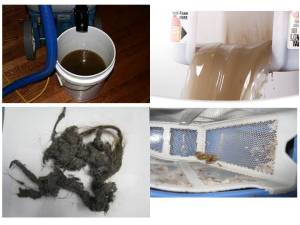An issue all carpet cleaners must grapple with is how to dispose of waste water.
Waste water can contain several different types of bacteria, body fluids, human and animal waste, chemical compounds, oil, grease, smoke, airborne pollutants, detergents, solvents and more – all potentially hazardous to human health and the environment.
Because of this, properly disposing of waste water is critical and there are a variety of rules and regulations on how it must be handled.
In most carpet cleaning situations, waste water can be discharged by pouring it into a sink, toilet or most other drainage systems as long as it is connected to the main sewer infrastructure.
Discharge water should be filtered to remove carpet fibres and other solids in order to prevent clogging pipes.
Filtered debris typically can be put in domestic / commercial refuse bins unless it contains hazardous materials.
If the waste water contains hazardous materials, it should be taken to public or private facilities that are equipped to handle such waste water.
Never discharge waste water by pouring it on the ground or into storm drains.
For public safety and liability reasons, maintain a log each time carpet cleaning is performed listing the discharge water disposal method, amount and any special handling requirements.
Waste water disposal has become a more serious problem in recent years. A failure to properly dispose of waste water can result in significant fines for the carpet cleaning technician and sometimes for the homeowner or building owner as well.

